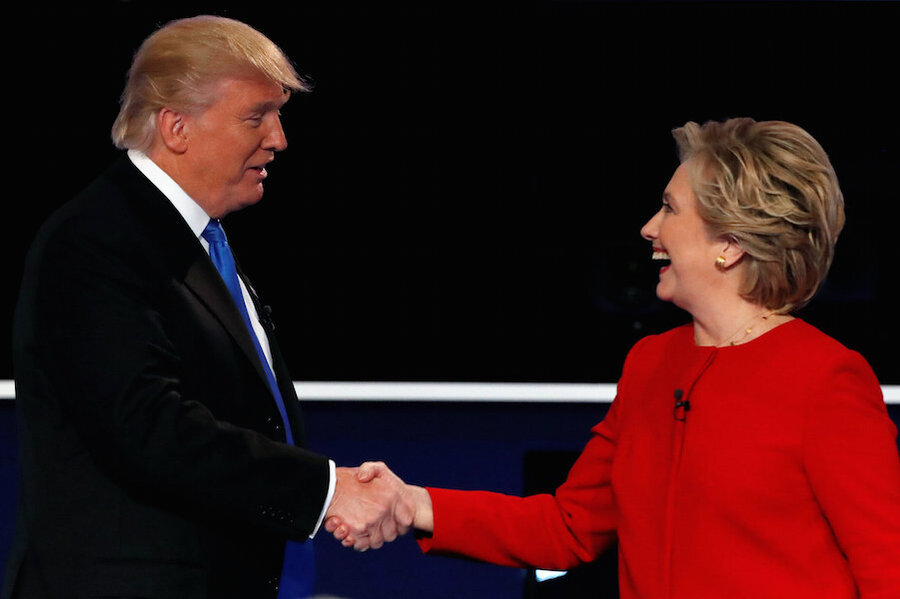Last night's presidential debate highlighted competing visions on taxes
Loading...
While neither candidate said much new about taxes in last night’s presidential debate, both clearly described their vastly different visions of tax policy. It was a true Mars and Venus moment.
Donald Trump believes that cutting taxes on business and high-income households will generate an unprecedented burst of economic growth. By contrast, Hillary Clinton believes that improving access to education and helping middle-income families address kitchen table issues like child care and health care—paid for by tax increases on the same firms and individuals whose taxes Trump would cut--is the key to future growth.
Both are probably wrong.
For Trump, it was old-school supply side tax policy: “I'll be reducing taxes tremendously, from 35 percent to 15 percent for companies, small and big businesses. That's going to be a job creator like we haven't seen since Ronald Reagan. It's going to be a beautiful thing to watch.”
And a few minutes later, “My tax cut is the biggest since Ronald Reagan. I’m very proud of it. It will create tremendous numbers of new jobs.” And finally, when Clinton accused him of not paying any federal income taxes at all in past years, Trump replied that this was “smart” on his part.
Clinton’s view of the world could not be more different. This is how she put it:
“I want us to do more to support people who are struggling to balance family and work…. So let's have paid family leave, earned sick days. Let's be sure we have affordable child care and debt-free college. How are we going to do it? We're going to do it by having the wealthy pay their fair share and close the corporate loopholes.”
And in case you didn’t get it, this is what each said about the other’s tax plan:
Trump on Clinton:
“You are going to approve one of the biggest tax increases in history. You are going to drive business out.”
Clinton on Trump:
“We…need to have a tax system that rewards work and not just financial transactions. And the kind of plan that Donald has put forth would be trickle-down economics all over again. In fact, it would be the most extreme version, the biggest tax cuts for the top percent of the people in this country that we've ever had. I call it trumped-up trickle-down, because that's exactly what it would be.”
First, a bit of dreaded fact-checking. Trump was wrong, at least about the original versions of both his plan and Clinton’s. The version he proposed last year wouldn’t be the biggest since Ronald Reagan. It would be the biggest—ever--as a share of the Gross Domestic Product. And while the Tax Policy Center has not yet scored his latest version, it too will be very, very big.
As far as Clinton’s tax increases, Trump was wrong again. In her version from earlier this year, Clinton proposed raising taxes by about $1 trillion over 10 years, or about 0.5 percent of GDP. Her latest version, which TPC is also still analyzing, would be a somewhat bigger tax cut. But not by much. Since World War II, Congress has passed at least nine tax hikes that were bigger than what she’s proposed.
To see how their plans stack up with past tax changes, take a look at this 2013 paper by Jerry Tempalski, a career analyst at the Treasury Department.
Would their plans unleash a burst of economic growth, as they promise? Unlikely.
Trump’s tax cuts would increase incentives to save, work and invest. Except for one problem: They’d add trillions of dollars to the budget deficit, which would drive up interest rates and very likely wipe out most or all of the benefits of his tax cuts.
By contrast, Clinton’s plan would provide some new tax subsidies for middle-income households with specific financial challenges, such as high medical or education costs. But these subsidies wouldn’t do very much to boost the economy, at least in the short run. And her tax increases on businesses and high-income households would likely reduce their incentives to save and invest.
So both were perfectly clear last night about what they’d do, at least when it comes to taxes. But both overstated the benefits of their ideas, Trump more than Clinton.
This article first appeared in TaxVox.





